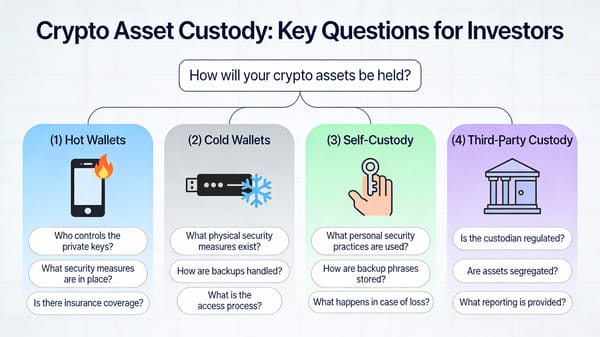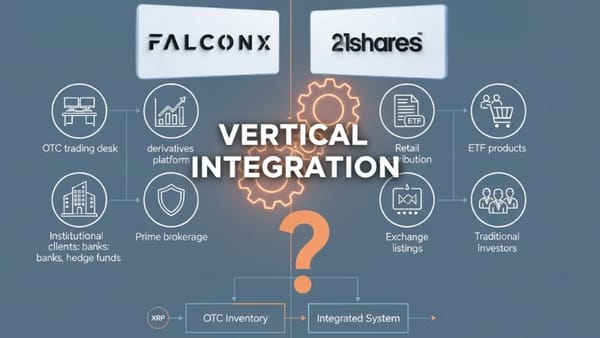Ripple and Immunefi Launch $200,000 Attackathon to Secure Revolutionary XRPL Lending Protocol
Ripple partners with Immunefi for a $200K Attackathon to secure the groundbreaking XRPL Lending Protocol. Elite security researchers compete to identify vulnerabilities before the protocol's validator vote. Training starts Oct 13, bug hunting Oct 27-Nov 29.

Ripple has partnered with leading blockchain security platform Immunefi to launch a groundbreaking security initiative aimed at fortifying the upcoming XRPL Lending Protocol. The collaboration, announced on October 13, 2025, introduces a $200,000 "Attackathon" designed to stress-test the proposed lending infrastructure before its anticipated validator vote later this year.
We’ve partnered with @rippleXDev to launch a $200,000 Attackathon helping secure the proposed XRPL Lending Protocol.
— Immunefi (@immunefi) October 13, 2025
This is a time-boxed, adversarial competition to identify vulnerabilities before the protocol reaches production. pic.twitter.com/792uz2fRNZ
A New Standard for Institutional DeFi Security
The Attackathon represents a community-driven approach to blockchain security, bringing together elite security researchers from around the world to identify vulnerabilities in the proposed XRPL Lending Protocol. This time-boxed adversarial competition aims to ensure the protocol is thoroughly vetted before reaching production environments where it will handle institutional-grade financial transactions.
"XRPL was designed to support secure, real-world financial applications, and that's especially important as lending is introduced to the network," said Jasmine Cooper, Head of Product at RippleX, in the official announcement. "This initiative is about making sure the proposed Lending Protocol is thoroughly tested and resilient before launch, so developers and institutions can build with confidence."
The educational component begins immediately with the Attackathon Academy, offering comprehensive training on XRPL technology, C++ curriculum, Devnet guides, and test environments. The active bug-hunting period will run from October 27 through November 29, 2025, giving researchers more than a month to probe the protocol for potential weaknesses.
Understanding the XRPL Lending Protocol
The proposed protocol, governed by the XLS-66 standard, introduces fundamental primitives for native lending directly on the XRP Ledger. Unlike traditional DeFi lending protocols that rely on smart contracts and virtual machines, this implementation integrates at the ledger's consensus layer and protocol level.
Key features of the XRPL Lending Protocol include:
- Fixed-term, uncollateralized loans sourced from pooled liquidity structures
- No smart contracts or wrapped assets required for operation
- Off-chain creditworthiness assessment combined with on-ledger enforcement
- First-Loss Capital protection scheme to absorb potential losses in case of default
- Native integration that bypasses the need for complex collateral management
The protocol leverages the XLS-65 specification's Single Asset Vault, which aggregates assets from multiple depositors to provide liquidity. Pool delegates evaluate borrowers based on creditworthiness and reputation off-chain, then formalize loan agreements on-chain using new ledger entries: LoanBroker and Loan objects.
According to development documentation, this modular and flexible design enables future expansion to support yield farming, escrow services, and additional DeFi primitives beyond basic lending functionality.
The Importance of Pre-Launch Security Testing
Lending protocols have historically been high-value targets in DeFi, with billions lost to exploits and vulnerabilities. Immunefi's track record demonstrates the critical importance of proactive security measures—the platform protects $180 billion in user funds and has prevented over $25 billion in potential hacks across more than 650 protocols.
"We are excited to team up with RippleX to secure the XRPL Lending Protocol through our Attackathon model, which trains and leverages the expertise of the world's best security researchers," said Mitchell Amador, CEO and Founder of Immunefi. "This initiative not only strengthens XRPL's infrastructure but also reinforces Immunefi's mission to protect the most critical ecosystems in Web3."
The reward structure incentivizes thorough security research:
- $200,000 full pool unlocked and distributed if one valid critical vulnerability is found
- $30,000 fallback pool paid to researchers who submit valid insights if no critical vulnerabilities emerge
- Flat distribution rules apply, with bonuses awarded to top performers
- Real-time leaderboards track progress throughout the competition
Additionally, participants will benefit from live X Spaces AMA sessions featuring Immunefi security leads and XRPL Foundation developers, providing real-time insights into the protocol's architecture and security considerations.
Market Context and Broader DeFi Landscape
The timing of this security initiative coincides with significant momentum in the XRP ecosystem. Following President Trump's announcement of a U.S. strategic crypto reserve that includes XRP, the token reached a new all-time high of $3.66 in July 2025 with the launch of the ProShares Ultra XRP ETF.
As of October 13, 2025, XRP trades around $2.55-$2.99, maintaining its position among the top five cryptocurrencies by market capitalization at approximately $150-180 billion. Multiple major asset managers including Grayscale, BlackRock, and Franklin Templeton have filed for spot XRP ETFs, with Bloomberg Intelligence assigning 95-100% odds for approval.
Ripple's broader strategic initiatives include applying for a U.S. banking charter and launching RLUSD, a dollar-backed stablecoin on the XRP Ledger that uses XRP as the fee currency, potentially boosting long-term token demand.
XRP and Ripple: Implications and Analysis
The introduction of native lending functionality represents a transformative milestone for the XRP Ledger's evolution into a comprehensive institutional DeFi platform. This development carries several significant implications:
XRP Price Potential
The XRPL Lending Protocol could serve as a fundamental catalyst for XRP adoption and price appreciation. By enabling developers and financial institutions to automate the entire loan lifecycle—from issuance to repayment—the protocol connects borrowers to global liquidity while enabling lenders to earn yields on otherwise idle assets.
Analyst projections for XRP in 2025 range from $2.05 to $5.81, with more optimistic forecasts suggesting the token could reach $5 by year-end if institutional adoption accelerates. The successful launch of the lending protocol, combined with potential ETF approvals, could push XRP toward the higher end of these predictions.
Long-term forecasts place XRP between $9.50 and $26.50 by 2030, contingent on continued expansion of Ripple's banking partnerships and broader implementation of On-Demand Liquidity (ODL) services across major payment networks.
Ripple's Business Operations
The lending protocol strengthens Ripple's positioning in institutional finance by demonstrating the XRP Ledger's capability to support sophisticated financial applications beyond simple payment transfers. This functionality is particularly significant for Ripple's enterprise blockchain strategy, as it:
- Enables financial institutions to leverage existing risk and compliance frameworks
- Provides an alternative to traditional banking infrastructure for credit markets
- Complements Ripple's existing payment solutions with lending and liquidity management
- Expands the addressable market for XRP Ledger adoption
RippleX's partnership with Immunefi signals a commitment to institutional-grade security standards, which is crucial for attracting regulated financial entities hesitant to adopt blockchain technology without rigorous vetting.
Legal Standing and Regulatory Considerations
While Ripple's legal battle with the SEC continues—with an appeal filed in October 2024 following a $125 million penalty—the company has demonstrated resilience and forward momentum. The structured, compliance-focused approach to the lending protocol aligns with regulatory trends favoring transparency and institutional safeguards.
Ripple CTO David Schwartz noted that the protocol "could bring new utility to the XRPL" without deterring traditional finance entities, though he acknowledged some companies might be reluctant to use certain features. The off-chain underwriting approach combined with on-ledger enforcement may provide a regulatory pathway that satisfies both DeFi innovation and compliance requirements.
Partnership Opportunities
The XRPL Lending Protocol opens new partnership avenues for Ripple with:
- Traditional banks and financial institutions seeking blockchain-based lending infrastructure
- DeFi protocols looking to integrate cross-chain lending capabilities
- Enterprise clients requiring automated credit origination systems
- Fintech companies developing next-generation payment and lending applications
Recent developments, including Ripple's expansion in Bahrain through a partnership with Bahrain Fintech Bay, demonstrate the company's continued focus on establishing strategic relationships in key financial markets.
Adoption Prospects
The native lending protocol's success depends on several adoption factors:
- Security validation: The Attackathon's results will significantly influence institutional confidence
- Regulatory clarity: Continued progress in Ripple's legal matters could accelerate adoption
- Technical integration: The modular design facilitates integration with existing systems
- Market education: The Attackathon Academy and developer resources support ecosystem growth
The protocol's design prioritizes flexibility and reusability, enabling future enhancements while maintaining backward compatibility. This positions XRPL to evolve alongside institutional requirements and DeFi innovations.
Looking Ahead: Validator Vote and Implementation
The XRPL Lending Protocol is expected to undergo a validator vote by the end of 2025. If approved, it will mark one of the most significant protocol upgrades in the XRP Ledger's history, fundamentally expanding its capabilities beyond payment processing into comprehensive financial services infrastructure.
The Attackathon's outcomes will play a crucial role in determining the protocol's readiness for production deployment. By engaging the global security research community through structured incentives and educational resources, Ripple and Immunefi are establishing a new standard for how blockchain protocols approach pre-launch security validation.
For developers interested in participating, the Attackathon Academy is now live with comprehensive training materials. The initiative represents not just a security exercise but an opportunity to shape the future of institutional DeFi on one of the world's most established blockchain networks.
As the crypto industry continues maturing toward institutional adoption, initiatives like this demonstrate the careful, security-first approach necessary for blockchain technology to support real-world financial applications at scale.
Sources
- Ripple and Immunefi Launch Attackathon (The Block)
- Immunefi Attackathon Academy
- XLS-66 Specification on GitHub
- XRPL Lending Protocol Technical Overview (DEV Community)
- Ripple Teams Up with Immunefi (CryptoPotato)
- Ripple $200K Attackathon Launch (AlexaBlockchain)
- XRPL On-Chain Lending Protocol Proposal (TradingView)
- Ripple Enters DeFi with XRP Lending Protocol (BeInCrypto)
- XRP Price Prediction 2025-2030 (Benzinga)
- Ripple XRP Price Forecast October 2025 (TradingView/CoinPedia)
DISCLAIMER: This newsletter is for informational purposes only and does not constitute investment advice, advertising, or a recommendation to buy, sell, or hold any securities. This content is not sponsored by or affiliated with any of the mentioned entities. Investments in cryptocurrencies or other financial assets carry significant risks, including the potential for total loss, extreme volatility, and regulatory uncertainty. Past performance is not indicative of future results. Always consult a qualified financial professional and conduct thorough research before making any investment decisions.



